Autism and DID/MPD – can someone autistic be multiple?
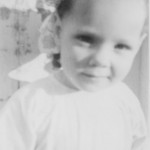 To answer this we really need to ask several questions.
To answer this we really need to ask several questions.
1) do all children, including autistic children, dissociate?
ANSWER
yes. In fact autistic children tend to dissociate more easily, more continuously and do so far beyond the age of 5 where most non autistic children adapt to no longer commonly dissociate. Autistic children who are used to dissociating (commonly presenting as staring into space, not responding as if deaf or unable to understand/recognise/emotionally or physically respond) are more likely than non-autistic children to progressively compulsively use repetitive self stimulatory behaviors as a form of self hypnosis to regain the comfort of the dissociated state.
2) do all children when subjected to overwhelming circumstances dissociate?
ANSWER
yes.
3) are those with significant information processing, emotional dysregulation and communication disorders more likely to find their circumstances continually overwhelming and, hence, find dissociation comforting.
ANSWER
yes.
4) are those with significant developmental disabilities known to be more commonly subject to family breakdown and abuse than children without developmental disabilities?
ANSWER
yes
5) are those with significant developmental disabilities known to be more commonly subject to additional mental health disorders than children without developmental disabilities?
ANSWER
yes
6) subjected to repeated physical, mental, emotional and sexual abuse, do children, including autistic children dissociate?
ANSWER
yes.
7) can an autistic child be born into a a family or go into care services where from an early age they are at the disposal of psychopath, sociopath, narcissist, substance abuser, pedophile or mentally ill carer/s?
ANSWER
yes.
8) are there any mental health disorders which an autistic person is incapable of additionally developing?
ANSWER
no. People with autism have been diagnosed with all kinds of co-occurring conditions: learning disabilities, epilepsy, gut/immune/metabolic disorders, speech aphasia, oral/verbal dyspraxia, verbal/visual/body agnosias, deafness, selective mutism, attention deficits, emotion dysregulation and rage disorders, conduct disorders, attachment disorders, anxiety disorders, mood disorders, psychosis, compulsive disorders, personality disorders, gender identity disorders, and, yes, dissociative disorders including PTSD.
9) don’t additional diagnoses invalidate earlier ones?
ANSWER
just as one can have diabetes and autism without one invalidating the other, one can have any mental health disorder and autism, including a dissociative disorder, and yes, someone with a developmental disorder can then also develop a dissociative disorder such as DID.
10) doesn’t DID mean a child is highly imaginative? In other words, wouldn’t someone with autism be unable to make up the imaginary friends necessary to develop DID?
ANSWER
research has found that girls with autism did commonly develop imaginary friends where it remained highly uncommon in boys. It is also the case that the alters in DID are not created consciously through processes of conscious imagination. They are created unconsciously, involuntarily, under unbearable circumstances such as rape. In other words the creation on alters occurs in dissociative states where the child may appear to be dead, staring at the ceiling, grimacing with fear, but in their mind has unconsciously become a TV character so as not to personally experience the abuse. To project onto this situation the freedom of a healthy child indulging in high skills of imaginary play is extremely offensive and naive in the context of the traumas which cause DID.
11) do all severely traumatised children develop DID?
ANSWER
no. DID is rare and is considered not part of a tendency toward Post Traumatic Stress Disorder. In other words it is more linked to differences in memory function (the inability to forget) than to imagination. In DID the abuse has been so overwhelming the personality has SPLIT. Fragments of the original personality continue to present, progressively developing separate sense of selves, each with their own history, perspectives, tastes, skills.
12) if someone with autism developed DID would all of their selves exhibit autism?
ANSWER
yes, but likely in different forms, just as if 5-10 children inherited or developed autism, each of their personalities would alter the way their autism presented.
13) as a person diagnosed with autism and DID, how many of your different selves are autistic?
ANSWER
We were diagnosed as psychotic at age 2 in 1965. Later with auditory processing disorder, atypical epilepsy, gut, immune, metabolic disorders and autism. All of these diagnoses were before being diagnosed with DID.
All of my selves are faceblind, all have degrees of verbal and visual agnosias (meaning deafness, meaning blindness). Several were echolalic, others silent, then selectively mute, others with semantic-pragmatic language disorder, one with an encyclopedic memory. One developed functional speech by late childhood. The others progressively followed with the exception of the Core Self who used typed speech because in addition to having always been silent had a stammer that made speech largely dysfunctional. Even this self developed verbal speech. All still have information processing disorders. All of the selves had differing combinations of mood, anxiety, compulsive disorders. Some had greater learning disabilities than others, some had less learning disabilities but significantly more difficulty with social-emotional communication than the ones with greater learning disabilities. Some had significant impulse control problems including self injurious behaviors from age 2, one had Tourette’s, one had OCD, one had GAD, one had mania and laughing fits.
14) if you had not acquired functional communication in late childhood, would you ever have been diagnosed with DID?
ANSWER
No. It required verbal feedback to understand what was going on.
15) could functionally non-verbal people with autism have co-morbid DID which has gone on undiagnosed and deemed part of their autism?
ANSWER
If they were subjected to extreme trauma, yes. Mood, anxiety, compulsive, attention disorders, rage, self injurious behaviors are STANDARD in those with DID. If a child with autism was abused in care (and I’ve worked with several who have been) and then regressed or developed additional behavioral problems or swung between highly contrasting (though still autistic) presentations it would almost always be deemed ‘part of their autism’ as, without functional communication, there would be no counseling, no disclosure. I have directly worked with non-verbal people with autism who have been through abuse and have typed about trauma, dissociation and splitting – and, yes, including two non-verbal people who typed about having developed other ‘selves’. Some are not so ‘lucky’.
Donna Williams, BA Hons, Dip Ed.
Author, artist, singer-songwriter, screenwriter.
Autism consultant and public speaker.
You can find more info at my website http://www.donnawilliams.netincluding my consultation page for DID where I offer online Peer Support.
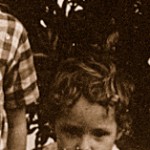
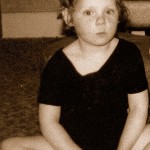
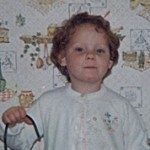
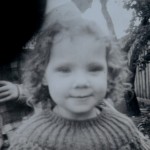
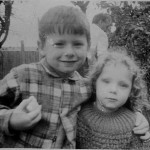
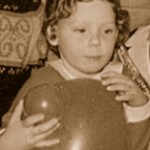
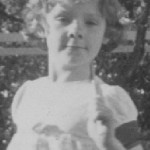

[…] This post was mentioned on Twitter by Francis Jurado. Francis Jurado said: Donna Williams' Blog » Blog Archive » Autism and DID/MPD – can … http://bit.ly/fAln38 […]
Thank you, Donna. You answered some of my questions about dissociation… ! I forgot to say: HAPPY NEW YEAR! Wishing you the courage and many new glad discoveries in the way of your integration.. ! And just happy life with understanding people around you.
Really interesting blog Donna and gang. I don’t know how you define your alters as a collective. Sorry if gang is not correct. I have Aspergers myself, and actually spent quite a bit of time recently exploring how my DID and my Aspergers intersect. Like you I thoroughly believe that these two things are not mutually exclusive. In fact for me I feel that beyond my childhood trauma, my Aspergers in some ways fed the inception of my DID. For I was a child who did not understand the vagaries of different personalities. So being exposed to my father who had undiagnosed Aspergers  himself, and a past built on immense trauma, he developed a huge array of mental health disorders that were never treated. Because of this he was a highly unpredictable person, and for someone who absolutely needed constancy to survive as an Aspie, this fried my nervous system. Also being very black and white, I believed from an early age that people were either totally good or totally bad. So in my mind my father was evil/bad, and unpredictable, not a good combination for me. Furthermore I was not and am not built with an innate ability to handle any intense emotions. So being exposed to terror at a young age meant I was experiencing emotions 1. any child couldn’t handle, but 2. certainly for me it was beyond my abilities. Therefore other personalities had to step in and absorb those emotions for me. They then developed with an ability to experience hatred, fear, joyousness, and so on, and express them, whereas I Kerri the main personality didn’t experience these. In my life, I ideally like to sit in the emotional middle, with contentment being just fine. I feel incredibly uncomfortable if I feel joy, or anger, and so on, and am very uncomfortable translating and expressing them. Yet my alters seem to experience many emotions without it being a problem for them. But all of them have all of my sensory issues in abundance, and are very poor at making eye contact. It seems that I was the only one who practiced for years in my 20’s and nailed the ability to make eye contact. So I agree with you that ones alters can share different expressions of the persons Aspergers or Autism.   Â
Thank you for addressing this. I find it difficult to find people who understand DID/MPD and I find it equally as difficult to find people who thoroughly understand Autism. Trying to find Professionals who understand both is pretty impossible. Until i saw the above posts, you were the only other known Autistic/Multiple i’ve known. Surely there must be more out there. Treating DID is very challenging but i have found adding the Autism component to it makes it 100 times more difficult, but important to say NOT IMPOSSIBLE! I wish there would have been someone 20 years ago that would have known more about this. But i can say now that i’m at the “light at the end of the tunnel” there were steps i would have taken in order. They are: 1) Rid yourself of any addictions first, 2) then Get assistance with Autism and communication (because therapy was a waste for a long time not being able to successfully communicate in the traditional therapy style) 2) find a therapist that understands how to process trauma non verbally. 4) And above all else, make sure this therapist is in it for the long haul and emotionally healthy themselves!!
As always Donna, forever grateful to have found you back then. it’s because of you and your books “Nobody Nowhere and Somebody Somewhere” i finally found the keys to unlocking the kingdom of healing. I have 23 years sober, am on my way to complete integration but unfortunately have just realized the Autism component and realize now that it has greatly slowed me down through the years in experiencing real healing. I have it now thanks to some terrific folks in my life. I can tell you that it’s sooo worth the fight people. Don’t give up. Healing is possible. I’m on the path after a very very long journey.
Los Angeles CA USA Resources:
Alyce Botwinick, MSW FACT (Autism Evaluations and Treatment)
Del Amo Hospital, Torrance CA (DID/PTSD/Trauma Treatment)
Marsha Houston, MSW (Therapist who stayed for the long haul)